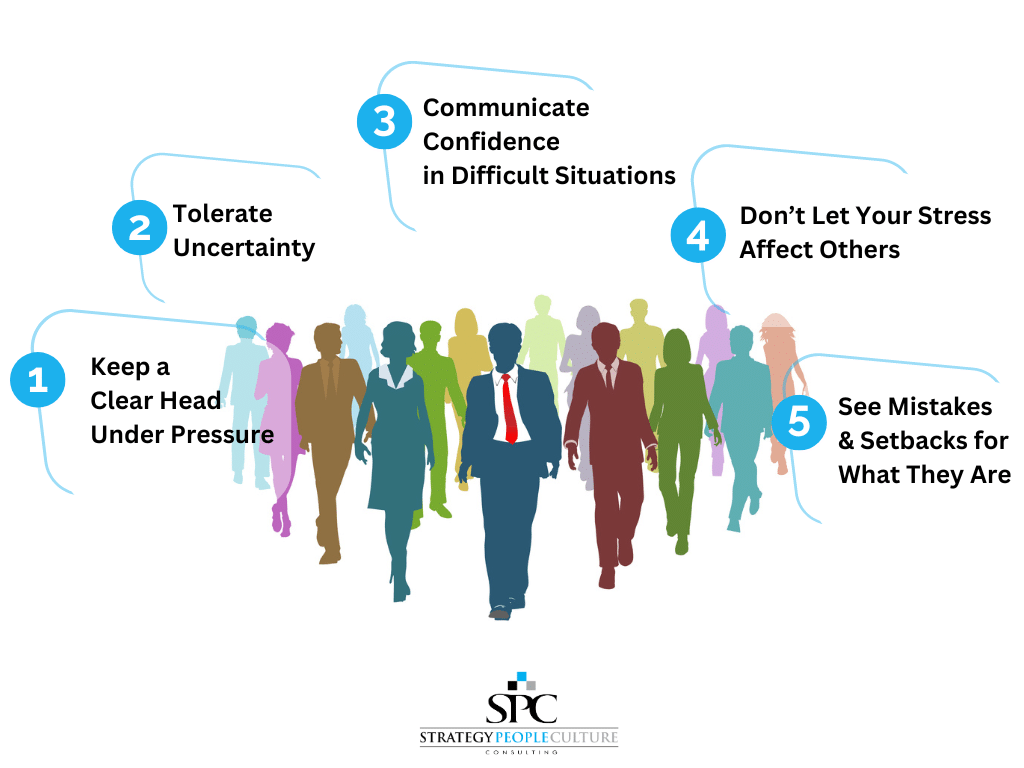Resilient Leadership: Create an Organization that Can Weather any Storm

During the COVID-19 pandemic, there was a lot of speculation that the radical changes to the business and consumer world brought by the pandemic might be permanent. This even included predictions that long-time business titans of the pre-pandemic world would crumble under the pressure of closures.
Now, just over three years after the first U.S. lockdown, we have seen that these apocalyptic predictions about the business world did not come true. Instead, the last fiscal year was a record year for corporate profit.
The pandemic has proved that the worst circumstances will not stop businesses from surviving and staying resilient. How were businesses able to weather the storm that was COVID-19 and even find the opportunity to grow? The difference is resilient leadership guides a company to success.
What Traits Make a Resilient Leader?
What made the difference between leaders who struggled to adapt to the pandemic’s conditions and those who found opportunities to achieve even more than before?

According to Forbes, “Resilience provides the ability to recover quickly from change, hardship, or misfortune.” Major parts of resilience are the ability to endure tough times but also to keep your cool and not take out your stress on others or let it affect how you make your decisions. Here are five important characteristics of a resilient leader:
1) Keep a Clear Head Under Pressure
When we are stressed, it can affect our decision-making. A resilient leader won’t let tension lead their decisions astray or cloud their judgment.
2) Tolerate Uncertainty
A resilient leader will accept that they will not always know what to do or how to handle a situation. When we accept uncertainty as a given, it is much easier to handle unexpected situations.
3) Communicate Confidence in Difficult Situations
As discussed in previous articles, a good leader sets the tone for an organization. A leader who stays cool under pressure will inspire their team to do the same.
4) Don’t Let Your Stress Affect Others
As important as it is to set a good example for your team as a whole, it’s also important not to let your frustrations affect your interactions with them one-on-one. We might unconsciously take negative feelings out on others, such as being uncharacteristically impatient with them or less forgiving of their honest mistakes. A resilient leader uses emotional intelligence skills to keep their emotions in check and prevent workplace conflict.
5) See Mistakes and Setbacks for What They Are
While dwelling on mistakes and setbacks can be tempting, a resilient leader keeps these in perspective. Resilient leaders handle their own mistakes with grace and will use them as a learning experience to help them navigate similar difficult situations in the future.
While resilient leadership starts with yourself, any resilient leader must have a supportive environment. Having a resilient team will make the difference both in the ability of a leader and a company to weather tough times.
Resilient Leadership Makes a Resilient Company
Companies that successfully weathered the storm of COVID-19 had more than just luck on their side. Any workplace culture is determined first and foremost by its leaders. This is especially important during uncertain times like we saw during the pandemic.
Good leaders were able to look at the changing landscape and make decisions that were best for their companies, even under unprecedented circumstances.

Starbucks Coffee was a standout example of resilient leadership in action during the pandemic, which commanded an impressive 37% United States market share before COVID-19. Starbucks was predicted not to return to pre-pandemic profitability until 2024. Instead, Starbucks bounced back and reported record profits as early as 2021.
For Starbucks, leadership absolutely made a difference. Starbucks is known for its leaders, who are genuinely passionate about the company and its vision. Notably, they are willing to make radical changes to ensure the company’s success and profitability.
In 2007, the company made significant changes to its business model when founder and then-CEO Howard Schultz realized the company’s quickly falling profits were due to negative customer perception. Consumers associated Starbucks with a “third place” outside the home or the workplace to relax and be productive but found the stores too focused on fast-food convenience. Re-orienting their business to represent the company’s original values better made Starbucks a market leader.
When this “third place” concept began to work against them during the pandemic, Starbucks’s leadership chose to change course and prioritize the speedy, efficiency-first service they had left behind a decade ago. The result was, once again, the company bounced back from a tough position and became more profitable than ever.
Starbucks’s journey shows that the ability to achieve success despite changing market conditions depends on resilient leadership. As we discussed above, these leaders can handle setbacks with grace, keep their emotions in check, and adapt and try new directions for their companies to ensure success in both bad and good times.
The Financial Benefits of Resilient Leadership
At the start of the pandemic, predictions were everywhere about how lockdown would change consumer behavior, workplace operations, and the economy at large. However, resilient leaders were able to keep their companies afloat even in these uncertain times and have become more profitable than ever as life returns to normal.

One common negative prediction was that businesses would struggle to operate when their employees were not working in their companies’ physical office spaces. However, as we saw in our last article, this did not play out well, and instead, working from home was even financially beneficial to some companies.
Another prediction was that industries would fail during COVID because consumer behavior changed so much during the lockdown. Mandates left consumers with no choice but to stay inside their homes, which put a strain on businesses like coffee shops, movie theaters, and others that offered in-person entertainment or venues for people to spend money outside of the house.
Resilient leaders adapted their business models to fit these new circumstances. For example, restaurants that had previously been sit-down only survived the lockdowns by adopting takeout and curbside pickup.
As we saw in our previous article, business leaders who embraced methods once seen as “impossible” were able to thrive under the tough conditions of the pandemic.
Other businesses were able to take advantage of the circumstances to grow. For example, during the pandemic, Amazon, the world’s largest online retailer, reported a 220 percent increase in profit between 2020 and 2021. Zoom rose above its competitors and became the most popular video conferencing service during this time; the company made over one billion dollars in revenue in 2021 and increased its net income by 200 million dollars from 2021 to 2022.

Resilient Leadership is Important (In Good Times and Challenging Times)
While resilient leadership is critical during uncertain times, leading with resilience makes the difference for a successful company even when times are good.
The famous phrase “Power Corrupts, Absolute Power Corrupts Absolutely” coined by the 19th Century British politician Lord Action is one way to think of this. When times are robust and companies are performing well, resilient leadership doesn’t let this go to their head as if everything they are doing is right. Instead, they focus on continuous improvement and can elevate profitability even further by not letting their egos get in the way of applying the concepts of resilient leadership. The traits of resilience, such as keeping cool under pressure and communicating confidence, are consistently important for leading a team, regardless of the successes and challenges an organization is dealing with.

As a leader, knowing to keep your emotions in check in the workplace and leading by example are key traits to developing a strong positive company culture. As we’ve seen in previous articles, a positive workplace culture will make for a more motivated team and better quality of work.
Additionally, a resilient mindset will come in handy when dealing with office conflict and issues of discrimination and harassment in the workplace. Keeping your emotions in check and staying calm under stress can help you handle sensitive situations successfully for the best interests of your team members and your company.
How To Learn Resilient Leadership with Executive Coaching
In a perfect world, market conditions would always be predictable. COVID-19 has taught us that they are not, and sometimes things will change in unexpected and unprecedented ways. Still, businesses need to adapt to survive. A resilient leader makes a critical difference.
Even without COVID and lockdown, it’s important to lead with the skills that help a business weather rough circumstances. If you are interested in developing your leadership skills further and learning to stay resilient through tough times, Strategy People Culture offers executive and leadership coaching to help you and your business achieve the best, even within the unexpected.
Strategy People Culture has ten years of experience helping leaders to succeed. We look forward to helping you as well! To schedule a consultation, call us at 833-762-5772 or email info@strategypeopleculture.com. You can also set up a free consultation with our team online.
